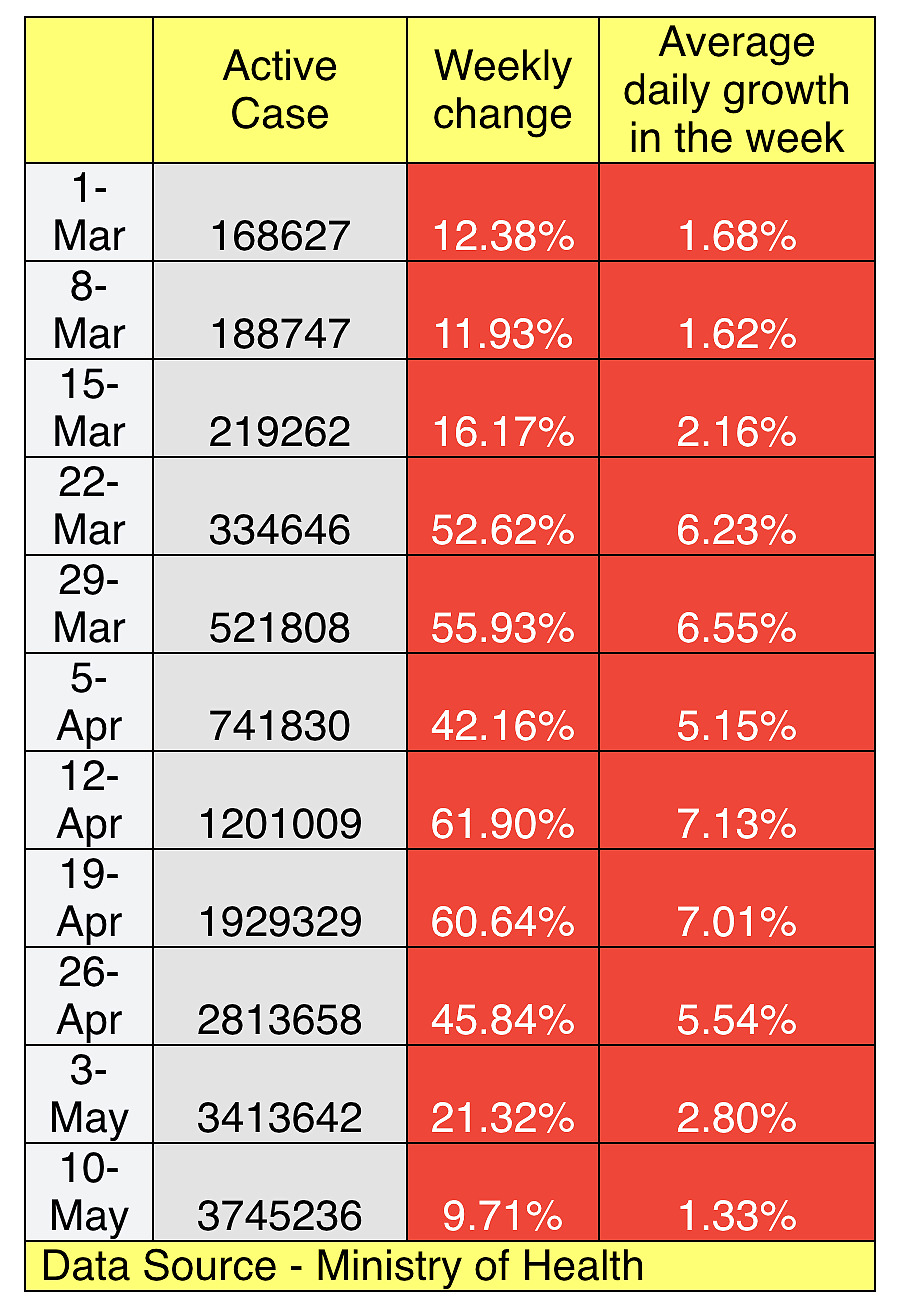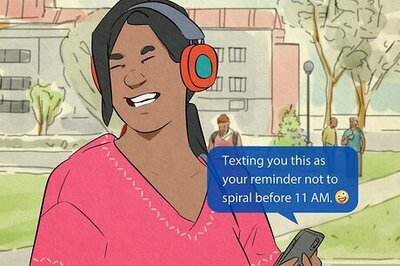
views
When it seemed like there was no stopping India’s ravaging second wave, hope floated in the form of a dip in daily Covid-19 numbers. India reported 3,29,942 cases on Tuesday and a dip in active cases for the first time in two months. New cases in epicentre Delhi on May 11 stood at 12,481, its lowest single-day total in 29 days.
On Wednesday India reported 3,48,421 new Covid-19 cases, 3,55,338 discharges and 4,205 deaths in the last 24 hours.
While the drop in numbers gives us hope, it needs to be sustained. The dip gives the authorities a chance to protect lives through treatment and break transmission through lockdowns.

The above table shows the alarming growth in Covid-19 cases beginning the second fortnight of March. The first week of March saw a weekly change of 11.93%. This increased to a whopping 53% between March 15-21. By March 22, India had 3,34,646 active cases and the country reported growth in active Covid-19 cases ranging between 45% to 62% in the next five weeks — 56% during March 22-29, 42% during the week of March 29- April 4, 62% between April 5-11, 60.6% during the week of April 12-18 and 46% between April 19-25.
The sudden increase forced the states to impose lockdowns. Maharashtra carried half of India’s active caseload burden initially. On April 5, when Maharashtra imposed lockdown-like curbs, it had 4,51,375 active cases or 60.85% of India’s total active caseload. The state has been in lockdown since then and has seen positive results. On May 20, Maharashtra’s share in the total active caseload burden in India reduced to 16.50%.
Delhi, the epicentre of the second wave, has been under lockdown since April 19 when it registered 76,887 active cases. This rose to 96,747 cases on May 1. But on May 10 Delhi registered 12,651 new cases, a sharp drop. The number of active cases has also come down and is currently at 85,258.
Many states have imposed lockdown like curbs, if not complete lockdowns, that only allows essential services. Uttar Pradesh imposed lockdown like curbs from April 30, Haryana from May 3, Kerala from May 8, Tamil Nadu from May 10, Karnataka from May 10, Odisha from May 5, Rajasthan from May 10, Bihar from May 4, Chhattisgarh from April 20, Jharkhand from April 22, Madhya Pradesh from May 6, Jammu & Kashmir since April 29 and Goa from May 9. Before this these had followed other restrictive measures like night curfews or weekend lockdowns.
States like West Bengal, Punjab, Gujarat, Telangana, Andhra Pradesh and Assam have put in place various restrictive measures like banning all social gatherings, night curfews, no movement of people in public places, and partial day curfews to control the spread of the novel coronavirus. And this too has yielded positive results. India has clearly been able to slow down the spread of the second wave. The week of April 19 -25 saw a 15% decline in the growth rate of the active cases in the country. The week of April 26 to May 2 saw a growth rate of 21.32% which came to a single-digit growth rate last week — 9.71%.
The average daily growth every week is another data set that shows how the lockdown has helped arrest the spread. Between March 1 and May 10, cases increased daily by as high as an average of 7.13% in the week between April 5 to April 11 from the 1.68% daily average growth rate observed on March 1. But after touching a high of 7.13%, it has seen a consistent decline and the last week saw an average daily growth of just 1.33% over the previous day.
An IIT-Kanpur study says a third Covid-19 wave may hit India by October. Epidemiologists say the only way to avert another big crisis is to mass vaccinate citizens like the US, the UK, and Israel did. We need to build on the vaccination achievements made in April but an acute shortage of vaccines has severely hampered the drive.
India opened the vaccination drive for all its population above 18 years of age on May 1 which meant an estimated 94 crore people have to be vaccinated. In the first 10 days of May, India has been able to vaccinate only 1.77 crore people or, on average 17.72 lakh a day against 30 lakh vaccine doses administered per day in April. At the current pace, India will take at least three years to inoculate its adult population.
If vaccination measures cannot be accelerated, then a total lockdown is the only measure that can avert the third wave. As daily cases fall, India must hit the ground running.
Read all the Latest News, Breaking News and Coronavirus News here. Follow us on Facebook, Twitter and Telegram.


















Comments
0 comment